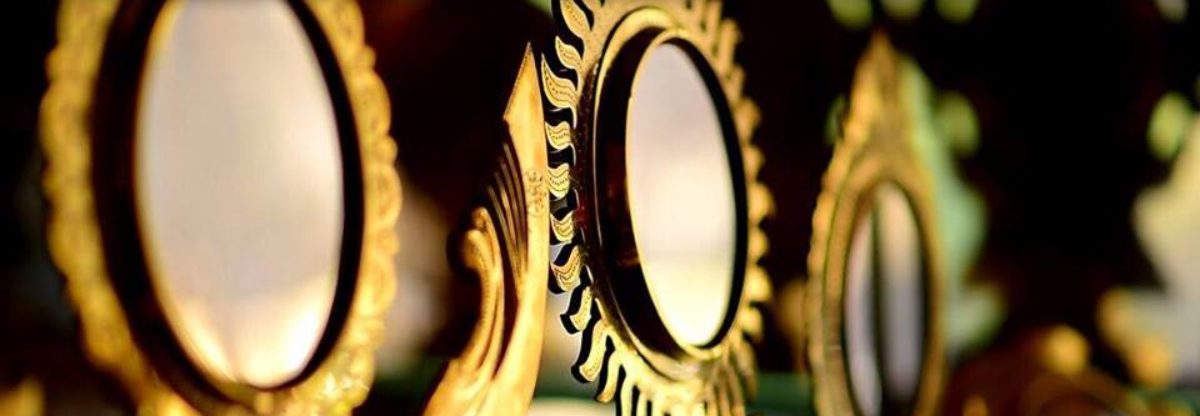Among Hindus in Kerala, there is great reverence attributed to Ashta Mangalyam (a platter of eight auspicious objects). This platter is part of the bride’s trousseau in some communities. On the day of Vishu (traditional harvest festival in April), people set eyes on this platter first before beginning a prosperous new agrarian year. While the actual symbolic objects differ by occasion, community and location, a regular on the list is a Vaal Kannadi (hand mirror) which is meant to bestow abundance and wealth on the beholder. And the most sought after mirror is a distortion-free Aranmula one.
The uniqueness of the Aranmula Kannadi (mirror) is that the reflective surface is not mercury-backed glass but metal! When you place a fingertip on a normal mirror, you see a gap between the front edge of the glass and the image on the reflective backing layer. However, in the Aranmula Mirror, this gap does not exist. In that sense, it is a true reflection.
The secret of achieving true reflective quality on metal is known only to a set of families in Aranmula, Kerala and this knowledge was inherited as legacy from their bronze-caster forefathers who moved here in the 18th century from Sankarankoil in present-day Tamizh Nadu.
Legend has it that they were required to create a resplendent crown for the local deity using bell metal. But they failed to create an alloy that would, after polishing, befit the grandeur. A widow from the community dreamt about the exact composition that would make the metal as reflective as a mirror. When it proved true, the community also began to create mirrors. The other story goes that when the bronze casters could not achieve the right alloy ratio, their wives threw in their tin jewellery into the mix out of sheer desperation. This is said to have changed the nature of the existing alloy to an unleaded copper-tin alloy, now used to create the Aranmula Mirror.
Each mirror is painstakingly made by hand and, depending on the size, could take about six months to make. The clay used for casting, the higher concentration of tin in the copper-tin alloy and the duration of heating the alloy are but some aspects in a process where purification of the metal is of great importance to get a good shine. Some secret herbs are rumoured to be added to the alloy. Even polishing the metal is said to be an elaborate process, done for a few hours a day for about 3 days.
A round mirror of 5†diameter set in an ornate brass frame costs about Rs. 8000. A major component of the cost is the labour. But the other factor is the considerable wastage in the manufacturing process as the metal plates are almost glass-like in their fragility. Traditionally, the demand for the product grew when it was included in the Ashta Mangalyam. However, owing to the price, it is now considered a precious and unique artefact.
Aranmula Mirros have now been granted GI (Geographical Indication) status and they are currently manufactured by the Parthsaradhy Handicraft Centre in Aranmula. While they have an online store (www.aranmulakannadi.com), you could simply walk into one of the Kairali Emporia (outlets of the Handicrafts Development Corporation of Kerala Ltd ) and see a sample there before placing your order.
(An edited version appeared in Culturama’s February 2011 Issue)
Article Coutesy: http://saritharao.blogspot.com
